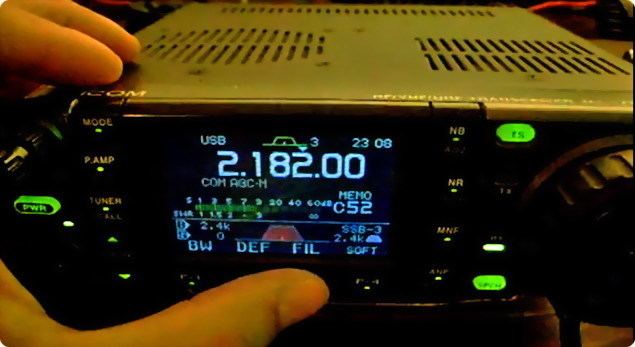 | ||
Mayday relay en 2182 khz
The radio frequency 2182 kHz is one of the international calling and distress frequencies for maritime radiocommunication in a frequency band allocated to the mobile service on primary basis, exclusively for distress and calling operations.
Contents
- Mayday relay en 2182 khz
- Tallinn radio receiced on 2182 khz mf
- Transmission modes
- Range
- Silence period
- Licensing
- Related distress frequencies
- Discontinued frequencies
- References
Tallinn radio receiced on 2182 khz mf
Transmission modes
Transmissions on 2182 kHz commonly use single-sideband modulation (SSB) (upper sideband only). However, amplitude modulation (AM) and some variants such as vestigial sideband are still in use, mainly by vessels with older equipment and by some coastal stations in an attempt to ensure compatibility with older and less sophisticated receivers.
Range
2182 kHz is analogous to channel 16 on the marine VHF band, but unlike VHF which is limited to ranges of about 20 to 50 nautical miles (40 to 90 km) depending on antenna height, communications on 2182 kHz and nearby frequencies have a reliable range of around 300 to 450 nautical miles (560 to 830 km) during the day and 150 to 300 nautical miles (280 to 560 km) or sometimes more at night. The reception range of even a well-equipped station can be severely limited in summer because of static caused by lightning.
Silence period
All stations using 2182 kHz were required to maintain a strictly enforced three-minute silence and listening period twice each hour, starting at h+00, h+30. This allowed any station with distress, urgent or safety traffic the best chance of being heard at that time, even if they were at some distance from other stations, operating on reduced battery power or perhaps reduced antenna efficiency, as for example from a dismasted vessel. As a visual aide-memoire, a typical clock in a ship's radio room would have these silence periods marked by shading the sectors from h+00 to h+03 and from h+30 to h+33 in green. Similar sectors were marked in red for what used to be the corresponding silence and listening period on 500 kHz between h+15 and h+18 and from h+45 to h+48. These silence periods are no longer required as the introduction of GMDSS has produced alternative automatic watchkeeping systems and the 500 kHz band is no longer in use for maritime traffic.
Licensing
In order to operate a marine radio transmitter on 2182 kHz, the operator must hold a GMDSS General Operating Certificate for mandatory installations, a Long Range Certificate for voluntary ones, or other equivalent and recognised radio operator's qualifications. Both these certificates have a wider syllabus than those of the GMDSS Restricted Operators Course or the RYA Short Range Certificate that is necessary for marine VHF use. In practice, an unqualified operator would not be prosecuted for the use of either transmitter in what turns out to be a genuine distress situation.
Related distress frequencies
2182 kHz forms an essential part of the Global Maritime Distress Safety System (GMDSS). It has an associated DSC frequency at 2187.5 kHz. Other international distress frequencies, in use as of 2008, include:
